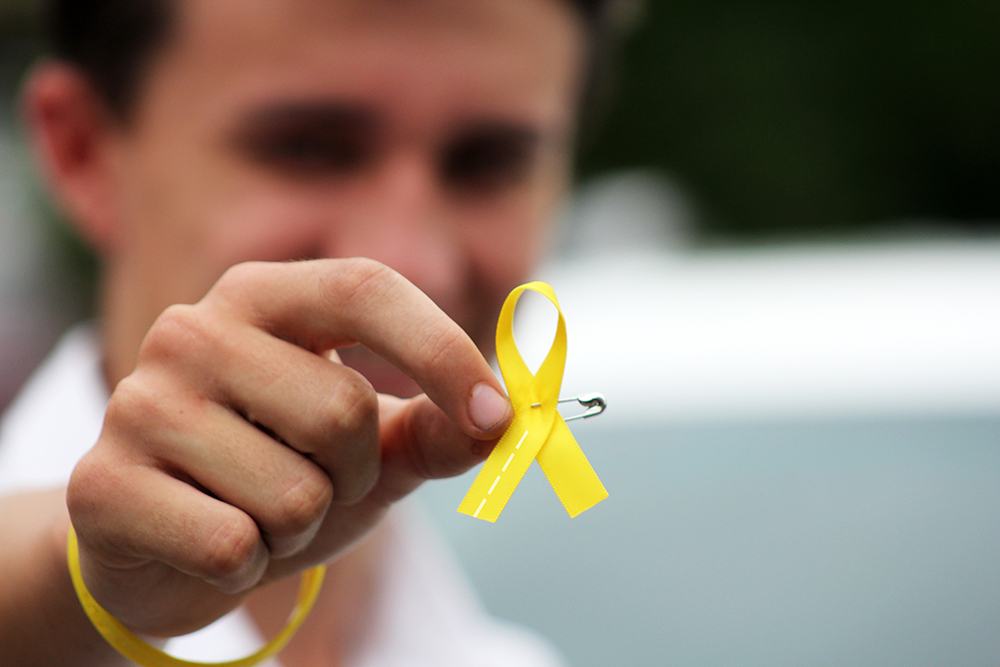Every session of the RYDA workshop and all our major themes, are expanded in pre and post workshop resources made available to all RYDA schools. Our online portal allows teachers to search by RYDA session name and/or curriculum topic to find resources that will help them create lessons and assignments using road safety as an authentic context for learning.
To give you an idea of the kinds of resources available, we’ve pulled out just a few of the supporting lesson ideas, student discoveries and road safety information which supports one of our six workshop sessions, Drive S.O.S. Given what’s been happening in the world, the timing is ripe to extend the themes of this session back into the classroom.
The RYDA workshop’s Drive S.O.S. (Drive So Others Survive) session is devoted to the protection of others. S.O.S., the well known distress signal to ‘send help’, takes on added meaning for our students as they begin to understand the special challenges of other road users and learn to respond in a way that protects those they share the roads with. The themes of the session; understanding the challenges of others, seeing our world as a shared space and responding in a protective manner, all have application in many areas of our students lives and are strong, positive life skills to develop at this critical age.
Over the past few months we have seen first-hand what can be achieved when we come together and take responsibility for the protection of the more vulnerable members of our community. We can, and have, taken action to save lives. We do not want to lose that awakening as we step back into a life which more closely resembles ‘normal’, particularly as we get behind the wheel of our powerful vehicles.
STATISTICAL ANALYSIS & SURVEYS: Students conduct web-based research to define a list of road users who are considered vulnerable (pedestrians, cyclists, motorbike riders, roadworkers, first responders, etc). From their list, students create and conduct a survey that ascertains the challenges of a chosen road user group. The survey should seek to uncover the behaviours of the vulnerable road user and the behaviour of drivers around them. Upon collection of their data, students analyse the behaviour (positive and negative) of these road users and, from their perspective, the behaviour (positive and negative) of vehicle drivers as they interact with them. Finally, students identify the top 3-5 challenges faced by their road user group. This activity is best completed pre-RYDA workshop attendance, so that students can bring their findings to the session and the discussion can be adapted and personalised to meet their experience, knowledge and views.
SCIENCE & HEALTH: Vision is key to safe driving – both peripheral and focus vision. During the session, students participate in an activity designed to test the the limits of their peripheral vision. Our resource outlines the steps to recreate this activity in the classroom, with students creating a homemade protractor, teaming up with a partner and measuring how much they can see out of the corner of their eye. They’ll discover that they can detect motion, color, shape, and text at different angles. Another resource sees students investigate how and why blind spots happen. These activities are designed to follow the RYDA workshop. Full directions for conducting the experiments can be found in our teacher’s portal. Contact your RYDA Program Coordinator if you need help signing up.
DEBATE: Students debate the topic “Crashes are not accidents, they are all preventable”. In preparing for the debate, students should analyse definitions of the word “accident” (from dictionaries). This activity could take place pre or post the RYDA workshop, but should be revisited after the workshop if conducted prior.
MULTI-MEDIA: Students create a campaign (using film, posters, info-graphics or other platforms) to promote a safety message for a vulnerable road user group. They will need to conduct research to determine the challenges and create a message for change. The campaign should incorporate the road safety yellow ribbon. This activity flows well from the Statistical Analysis activity and is best completed post-RYDA workshop attendance to build on the knowledge and skills students have learned from the workshop.
This is just a very small sample of the many resources available to support our teachers as they continue the hard work back in the classroom. We recognise that the most effective approaches to road safety education occur over time and involve a whole school approach with content embedded in the school curriculum and reinforced by the classroom teacher. The RYDA team is here to assist teachers along every step of the journey, as they help their students become active citizens with positive, socially connected road user identities.
About the Yellow Ribbon
The yellow ribbon, as a symbol of road safety, give us an opportunity to stand in solidarity with those who have been injured or killed in road crashes. It’s also a chance to show a commitment to actively protecting all road users by making safe choices as drivers and passengers and driving so others survive.
